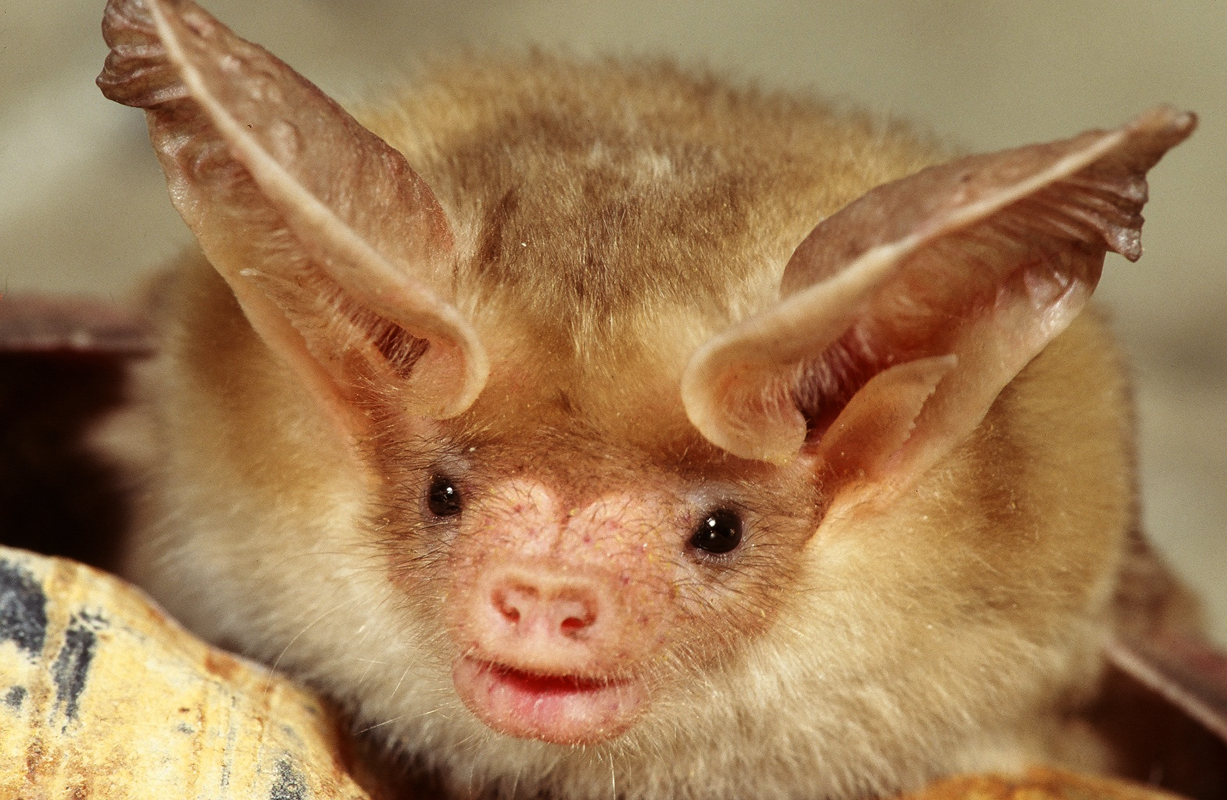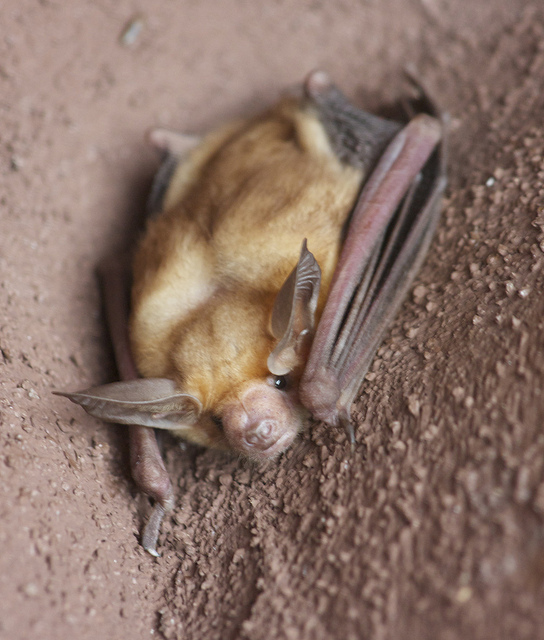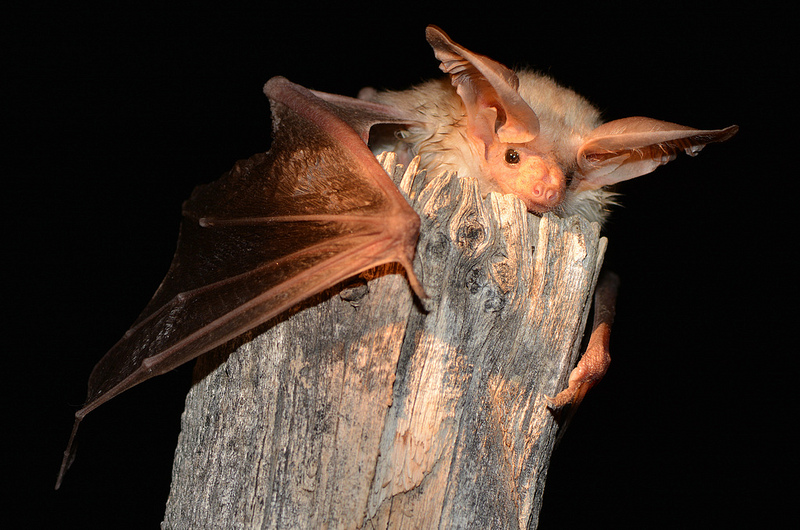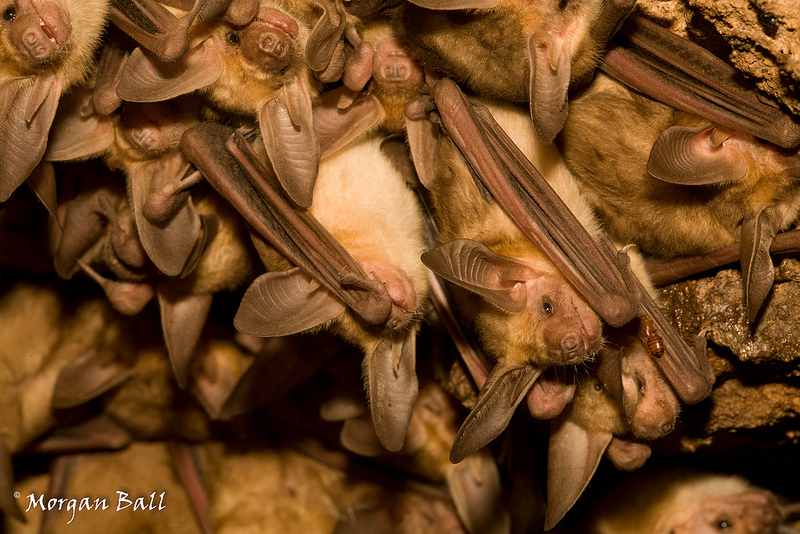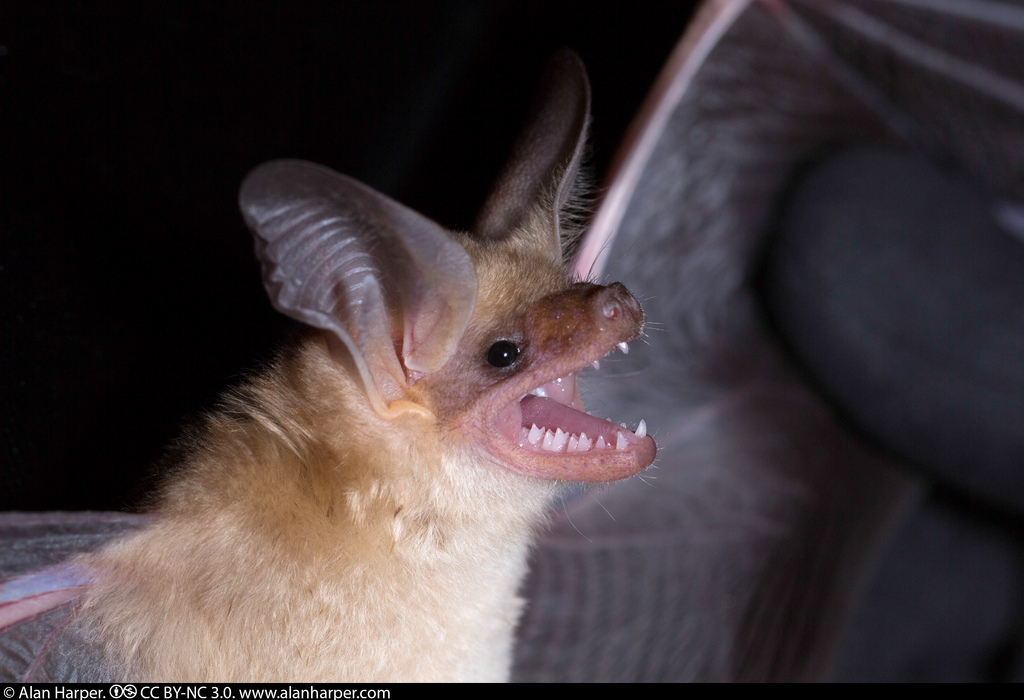Reproduction
Reproduction in pallid bats (Antrozous pallidus) (as well as other species of bats) is
centralized around hibernation (Oxberry, 1979). What’s interesting about their
reproductive strategies is that it often occurs in two stages:
before hibernation and after hibernation (Oxberry, 1979). The female reproductive
period starts in autumn (before hibernation) and finishes in the
spring (after hibernation).
There
are two different arrangements to the reproductive cycle (Oxberry,
1979). One is when procreation
takes place in the late summer or early autumn; hibernation then
follows shortly after. In this arrangement, the female reproductive
system collects the sperm and saves it until the spring when
ovulation occurs. Once ovulation has started, the sperm will then
fertilize the egg, resulting in gestation (Oxberry, 1979).
Another way of reproduction is when procreation, ovulation, and
fertilization all occur before the female enters hibernation. Even
the beginning stages of the formation of an embryo occur. In other
words, the female pallid bat begins hibernation while already being
pregnant (Oxberry, 1979). Now you may be wondering if the embryo
starts to develop while the mother is in hibernation; the answer is
no. What happens is that the embryo is not implanted into the uterus
until the spring, where it will then result in gestation after
implantation (Oxberry, 1979). So the main theme between both types
of reproductive arrangements is the presence of a delay somewhere in
the cycle; there is either a delay in ovulation until the spring or
there is a delay in implantation until the spring (Oxberry, 1979).
Why
is it advantageous for pallid bats to split-up their reproductive
cycle? Reproduction in animals (less so in humans) is all about
timing and energy costs. Giving birth in the spring is when
environmental conditions are the most supportive for the development
of offspring (Crichton and Krutzsch, 2000). If a female pallid bat
had to engage in copulation, ovulation, fertilization, implantation,
and gestation all after hibernation, there wouldn’t be enough time
to complete all those steps of reproduction and have the brood ready to be delivered in time for spring. Also, keep in
mind that procreation is very expensive in terms of energy usage; a
female pallid bat just coming out of hibernation is low on energy as
it is (Crichton and Krutzsch, 2000). Throwing in complete
reproduction would be absolutely unpractical. In conclusion, the
most advantageous method of reproduction in pallid bats is to
separate the stages into occurring before hibernation and occurring
after hibernation (Oxberry, 1979).
The gestation period for a pallid bat is between 53 and 71 days, and
parturition typically occurs between May and June. Pallid bats also
have a relatively small litter size: usually one to three young,
averaging at two (Weber, 2009). The offspring are generally weaned
from their mother at about six to eight weeks of age, and are able
to reproduce during their first mating season (Weber, 2009).
The primary reproductive behavior that has been observed in pallid
bats is the use of mating calls. The mating calls in bats are
complicated and specialized, therefore they are distinct between
each species; a pallid bat will be able to recognize the mating call
of a fellow pallid bat (Pfalzer and Kusch, 2003). The purpose of a
mating call is to attract a potential suitor. Even though the mating
calls may seem simple and universal between species, they are
actually highly evolved and selective to ensure the best males from
the species mate with the best females from that same species
(Pfalzer and Kusch, 2003).
Return to Habitat Go to Interactions/Nutrition
Return Home
